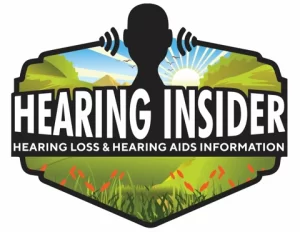In our daily lives, hearing aids play a critical role in enhancing the hearing experiences of many individuals, especially senior citizens. Some individuals have issues with the tip of the hearing aid slipping out of their ear canal especially if their ear is wet, sweat, or when they chew.
Understanding the Problem
The problem of hearing aid molds slipping out or causing discomfort is common, and it is essential to tackle these challenges to ensure a comfortable and optimal hearing experience.
Why the Fit of the Mold Matters
The mold is a vital part of the hearing aid, connecting the device to the ear. A proper fit ensures:
- Comfort: The right size and material prevent irritation or pain.
- Sound Quality: A well-fitted mold helps in transmitting sound effectively.
- Security: A snug fit ensures the hearing aid stays in place during daily activities and prevents it from getting lost.
- A secure earmold reduces the risk of feedback in the hearing aids.
Common Concerns

- Slipping molds: Many hearing aid users have reported that their hearing aid molds slide out, regardless of the tip size.
- Discomfort with hard molds: Some users experience discomfort with hard molds, and this discomfort can even extend to pain when chewing or smiling.
- Custom mold issues: Custom in-the-ear hearing aids or molds may require rebuilding if they slide out frequently.
Solutions and Adjustments
Changing the Tip Size
- Using larger dome tips: Sometimes, a domes are preferred over molds for some users. See more information about selecting domes vs molds.
- Add a retention lock to the hearing aid even if you are using an earmold.

Customization
- Rebuilding custom molds: If the problem persists with and you already have custom molds, they may need to be remade by an audiologist, if this is done within the first few months it will be covered under warranty and be free of charge.
- Soft molds: Switching from hard molds to soft molds can solve the problem of slipping out as it increases friction, soft molds are also good for those with pain issues.
Innovative Solutions
- The use of retainers and anchors: Small retainers or earmolds with anchors can keep the hearing aid in place. These are called retention locks. See the article on how to use the retention locks on the hearing aid.
Working with Your Audiologist
Finding the right solution often requires collaboration with your audiologist. Here’s what you can do:
- Communicate your concerns: Don’t hesitate to express any discomfort or issues you are experiencing with your hearing aids.
- Regular appointments: Regular check-ups with the audiologist help in early detection and correction of any problems.
- Explore different options: If one solution doesn’t work, don’t give up. Your audiologist can offer different options, such as using a different type of mold or integrating parts from other hearing aids.
Conclusion
The hearing aid experience should be comfortable and effective. Slipping molds or discomfort should not be a barrier to enjoying the sounds of life. Open communication with your audiologist, exploring innovative solutions, and being patient in finding the right fit can lead to a satisfying hearing experience. Remember, the journey to perfect hearing is a collaboration between you and your audiologist, and there are always solutions to any issues you might encounter.

